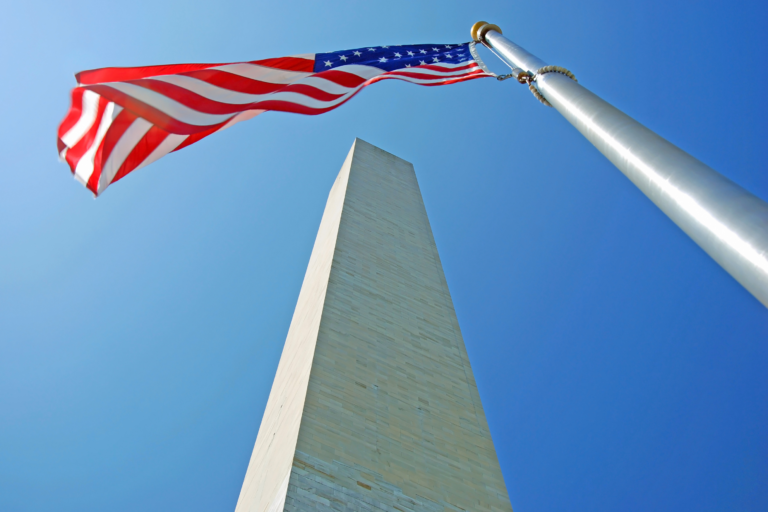
Fifty white stars on a field of blue (one for each state) and 13 horizontal stripes, alternating red (7) and white (6) for the original 13 colonies, the U.S. flag is a revered symbol by many of the nation. And in recognition of the honored place Old Glory holds, in 1947, Congress passed a series of laws, specifically proscribing how the flag should look, be cared for and respected.
Found near the beginning of the codified version of the statutory laws of the United States (called the U.S. Code) in Title 4 (out of 54), the provisions relating to the flag are numerous and detailed. For example, the Code has specific rules for when civilians can display the flag, and these allow that it may be set out for 24 hours at a time, should be raised quickly and lowered “ceremoniously,” and unless an all-weather flag, should not be displayed during bad weather. 4 U.S.C. § 6.
Moreover, the Code instructs that, in addition to the dates of admission of the States, State holidays and those days “proclaimed by the President,” the Flag “should be displayed” on the following days:
- New Year’s (January 1)
- Inauguration Day (January 20)
- MLK Day (third January Monday)
- Lincoln’s Birthday (February 12)
- Washington’s Birthday (third February Monday)
- Easter Sunday
- Mother’s Day (second May Sunday)
- Armed Forces Day (third May Saturday)
- Memorial Day – at half-staff until noon (last May Monday)
- Flag Day (June 14)
- Father’s Day (third June Sunday)
- Independence Day (July 4)
- National Korean War Veterans Armistice Day (July 27)
- Labor Day (first September Monday)
- Constitution Day (September 17)
- Columbus Day (second October Monday)
- Navy Day (October 27)
- Veterans Day (November 11)
- Thanksgiving (fourth November Thursday)
- Christmas (December 25)
In addition, two types of institutions, schools and polling places, should always display a flag when operating.
Id.There are also rules about how to display the Flag in a procession (like a parade), and it should either be to the right or in front of a line of flags, and should never be placed on a parade float except on a staff. 4 U.S.C. § 7. It also should not be draped over the hood, sides, or back of a car, but may be “fixed firmly to the chassis or clamped to the right fender.” Id.
Except for church services for Navy personnel when a church pennant may be hung above it, the Flag should never be displayed below another one, other than at the United Nations headquarters. Id.
The Code also explicitly commands respect for Old Glory, directing that the Union should only be displayed on the bottom “as a signal of dire distress,” the flag should never touch “the ground, the floor, water, or merchandise,” it “should never be used as wearing apparel,” or for a costume. (4 U.S.C. § 8.) In fact, only patriotic organizations, policemen, firemen, and military personnel are allowed to wear the flag as part of their uniform or costume, and under no circumstances is the flag to be made part of an athletic uniform, despite that even some major athletic organizations do this very…
The post The Surprising Number of Legal Rules Pertaining to Displaying a United States Flag appeared first on FeedBox.